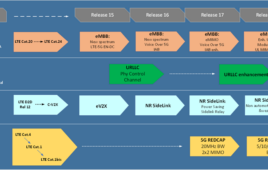A massive rise in mobile data traffic has been playing out over the past several years, but a new forecast from Cisco indicates the global average internet traffic on smartphones is set to more than quadruple by the start of the next decade.
According to Cisco’s latest Visual Networking Index report, the global average IP traffic from smartphones is set to skyrocket from 3,500 MB per month per device in 2016 to 14,900 MB per month per device by 2021. Tablet IP traffic worldwide is also set to rise from 9,100 MB per month per device to 25,600 MB per month in the forecast period. All told, smartphone are set to account for a third of global IP traffic in 2021, up from 13 percent in 2016, while non-PC devices overall will make up three-quarters of worldwide IP traffic.
Globally, internet traffic per user per month across devices is expected to hit 61 GB by 2021, more than double the 24 GB seen in 2016. That figure is even higher for North America, which is expected to see a stunning 181 GB of internet traffic per user across their devices in 2021.
Cisco’s report indicated that much of this traffic will continue to be driven by video. By the end of the forecast period, video is expected to account for 82 percent of total IP traffic, up from 73 percent in 2016.
But cellular networks won’t be carrying this load alone.
While WiFi and mobile-connected devices will generate 73 percent of internet traffic in 2021, 53 percent of internet access will flow over WiFi. Only 20 percent of internet traffic will be carried on cellular networks, and fixed access will make up the remaining 27 percent. Still though, cellular’s portion in 2021 will be up 10 percentage points from 2016, when it was carrying 10 percent of the load and fixed was carrying 38 percent. The average mobile internet speed in North America is expected to nearly double from 13.7 Mbps in 2016 to 25 Mbps in 2021.
To support the increasing burden, Cisco predicted there will also be an exponential increase in the number of WiFi hotspots from 85 million in 2016 to 526.2 million in 2021. China and the United States will lead hotspot growth, coming in with 170 million and 86 million hotspots respectively by 2021.
More insights from Cisco’s report can be found here.




